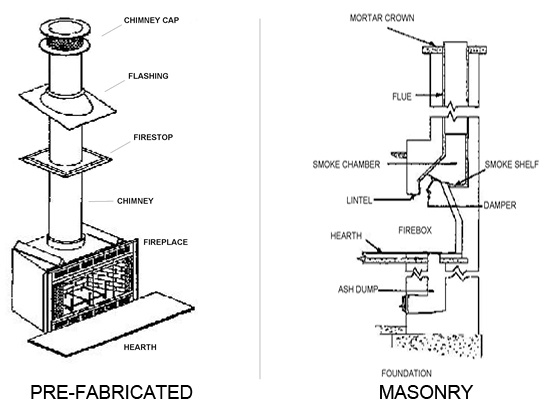When most people think of chimneys, they think of fireplaces. Memories of cold winter evenings, relaxed and cozy in front of a crackling fire are hard to beat, and the ability of an open fire to soothe the wild beast within us all is legendary.
Since the dawn of time, humans have gathered around the open fire for a sense of safety and community, and the fireplace is still the focus of family living in many homes, especially around the holidays.
But in spite of all the glowing aesthetics, there are some practical considerations. When your dealing with an element as capricious and potentially dangerous as fire, knowledge really is power, so please read on to learn how to make your fireplace both safer and more enjoyable.
The Basic Anatomy of a Fireplace

Fireplaces generally come in two types*: masonry fireplaces built entirely of bricks and mortar; and factory built fireplaces consisting of a lightweight metal firebox and a metal chimney (there are a few hybrids too, the most common being a heavy metal firebox and smoke chamber coupled to a regular brick chimney). To figure out which you have will take only a moment of detective work on your part.
A masonry fireplace has a firebox built of individual generally yellowish firebrick, a brick chimney above the roof, and if you look up past the damper you will see a roughly pyramid shaped affair also built of brick.
A prefab fireplace generally has a firebox of cast refractory panels, and usually some metal is visible in the room all around the firebox. If you look up past the damper you will see a round metal chimney. And above the roof is more round metal chimney, sometimes surrounded by a simulated brick housing.
* For fireplaces constructed completely of concrete (also known as Rampart General fireplaces) please visit the Dale Feb Website for specific information and publications.
